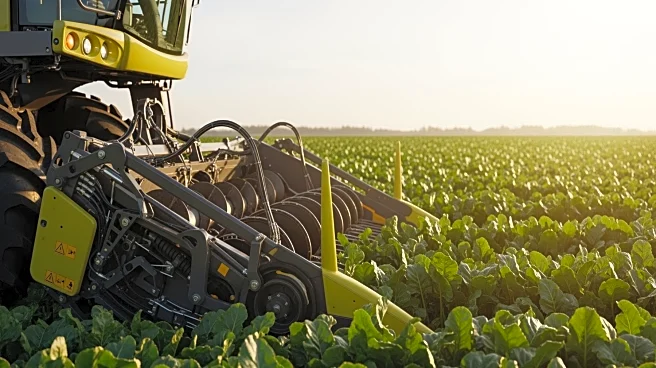What's Happening?
Students at the University of Florida have created an art installation featuring 5-foot-tall hay bales as part of the Dr. E.T. and Vam C. York Art and Agriculture Competition. Led by Rosemary Springer, a recent graduate of the sculpture and studio art master's
program, the project aimed to bridge the disciplines of art and agriculture. The winning project, titled 'In the Fields,' wrapped hay bales with stories from five small family farms across the United States, highlighting the labor, history, and dedication involved in farming. The competition encourages collaboration between students from the College of Agricultural and Life Sciences and the College of Arts, with projects judged on innovation, achievability, scientific and artistic merit, and engagement.
Why It's Important?
This initiative underscores the potential for interdisciplinary collaboration to raise awareness about the challenges and contributions of small family farms. By combining art and agriculture, the project offers a unique perspective on the agricultural industry, making it accessible to a broader audience. The competition provides students with the opportunity to explore creative solutions to real-world issues, fostering innovation and cross-specialization. It also highlights the importance of storytelling in connecting people to the agricultural sector, which is often overlooked in urban settings.
What's Next?
The success of the 'In the Fields' project may inspire further interdisciplinary collaborations at the University of Florida and beyond. The competition encourages students to submit proposals for future projects, promoting continued exploration of the intersection between art and agriculture. As awareness grows, there may be increased interest in similar initiatives that highlight the stories and contributions of small farms, potentially influencing public perception and policy related to agriculture.
Beyond the Headlines
The project reflects broader cultural and educational shifts towards valuing diverse perspectives and interdisciplinary approaches. By integrating art and agriculture, the initiative challenges traditional boundaries and encourages creative thinking. It also emphasizes the role of education in fostering innovation and collaboration, preparing students to address complex societal issues through diverse skill sets and knowledge bases.













